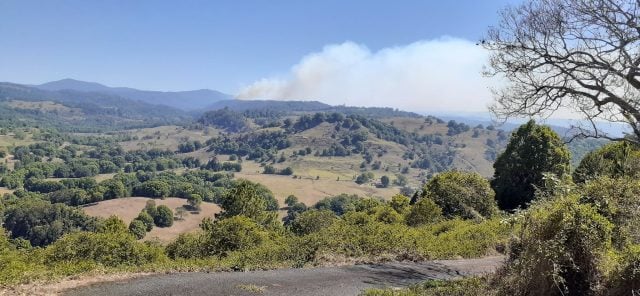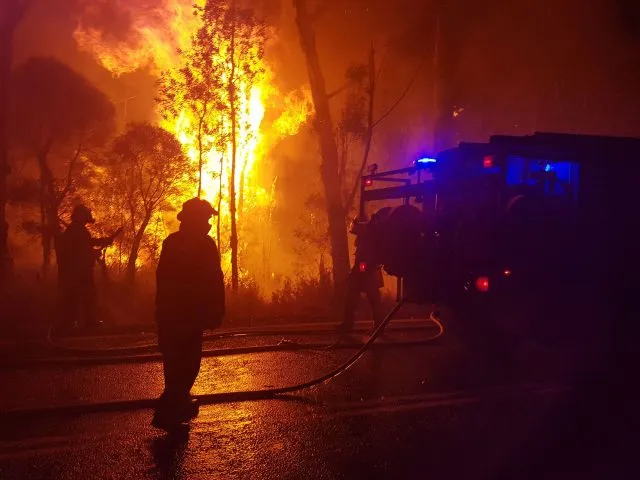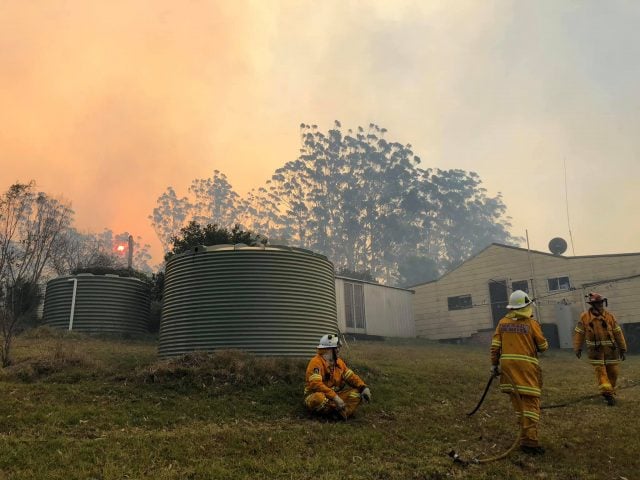
Brought to you by The Echo and Cosmos Magazine
Research led by the Australian National University (ANU) has discovered undocumented health problems among people exposed to bushfire smoke. This suggests that the physical and mental impacts of the Black Summer fires were more extensive than previously thought.
The team surveyed more than 2,000 residents of areas around Canberra, Australia’s capital city, who were affected by widespread bushfires during the deadly summer of 2019–20. The survey asked a range of questions about physical and mental symptoms, as well as their behavioural changes during that time.
‘We found that almost every single respondent to our survey experienced at least one physical health symptom that they attributed to the smoke,’ says Iain Walker, co-author of the study and a professor of psychology at ANU.
The most common physical symptoms were coughing and eye and throat irritation.
‘In addition, about one-half of our respondents reported symptoms of anxiety and depression, as well as sleep loss,’ says Walker.
But less than one-fifth of respondents (17 per cent) went to a medical practitioner for help, and only 1 per cent went to hospital. This means that the official rate of people presenting to the health system as a result of bushfire smoke is almost certainly much lower than the actual number of people affected.

Walker explains: ‘It is likely that official statistics greatly underestimate the prevalence of health problems because of the major hurdles in the way of anyone presenting into the system, and we think many residents were motivated to avoid overburdening the health system at a time when it was stretched.’
We have long known that bushfire smoke can cause health problems. It contains a mix of particles and gases that can be transported by wind through the atmosphere, including fine particulate matter (particles smaller than 2.5 micrometres in diameter) that impact the functioning of the respiratory and cardiac systems, as well as impair the immune system.
Every year, 340,000 premature deaths can be attributed to bushfire smoke around the world, and during the Black Summer, millions of people were exposed to extreme levels of air pollution.
This new research from ANU highlights that bushfire smoke affects mental health as well as physical health.
Some of the mental effects were direct, such as anxiety and stress, and others were secondary, such as disruption to normal routines – the likes of sleep and exercise – that promote wellbeing.

There was also, Walker says, ‘significant disruption to relationships with friends, family and community, which are all things that help maintain our wellbeing’.
Some of these impacts may sound familiar from COVID-19 lockdowns, but this data was collected in February and March 2020, meaning there was minimal overlap.
This adds to the relatively few studies that look directly at the impacts of bushfire smoke on psychological health and wellbeing, separate from exposure to bushfires in general.
But while a survey is a good way to gather information from a large number of people, it does have limitations, says Brian Oliver, a respiratory researcher at the University of Technology Sydney and the Woolcock Institute of Medical Research.

For example, he says, it is difficult to get a baseline with which to compare the responses.
‘It’s not clear from the study whether or not they’ve actually compared these people’s symptoms to a similar period,’ says Oliver. ‘So for example, are these the people that would visit a health care professional regularly anyway?’
But Oliver says this is still valuable work, especially since it is ‘incredibly difficult” to access healthcare records in Australia to obtain similar information.
‘In the Netherlands, for example, there’s one database… and your whole medical history is there,” he says. ‘But in Australia, we’re not set up for that, so this is a really nice snapshot of something that will allow other researchers to build upon it with more detailed, investigative-type studies.’
Walker agrees that it’s becoming increasingly important to investigate the health effects of bushfire smoke.

‘We have known for some time from the climate science that the frequency, intensity and severity of bushfires in Australia will increase, so it’s something we need to learn to adapt to,’ he says. ‘Part of that is understanding the consequences of things like exposure to bushfire smoke.’
Walker recalls that during the Black Summer, the bushfire smoke was so intense in Canberra that it was constantly setting off smoke alarms at all ANU buildings. It was a logistical nightmare – to the point that the university had to close the campus.
‘It’s kind of a little microcosm of what happens in that sort of widespread catastrophe,’ he says. ‘Services – service support, service delivery – are stretched beyond capacity.’
Not only are disasters like bushfires expected to increase, but they are also likely to cascade into each other – imagine, for example, if the Black Summer had overlapped with the peak of COVID.
‘Broadly, I think we as a nation need to look closely at our various health systems and the ability to cope with a massive surge in demand,’ Walker says, referring to not just hospital admissions but access to pharmacies, mental health services and more.
‘We are conducting further studies to understand how bushfires continue to affect the mental health of people impacted by these fires and the smoke, and how we can build resilience among individuals and communities.’
Oliver says these kinds of studies are also important so that ‘the pollies don’t forget that bushfires have devastating consequences.
‘The more evidence and the more data we have showing that this is actually what happens in the real world when there are bushfire events, the more likely we are to get an appropriate response in the future.’
For example, if there were major fires in Canberra, GPs, psychologists or other health services from Sydney could be called in to help share the burden.

There are still many unanswered questions around the impacts of bushfire smoke, including the simple fact that we don’t have a good understanding of the long-term health consequences.
This is partly due to lack of funding for health-related research. Even after the Black Summer fires, Oliver says that comparatively little funding was put into research around the impacts of smoke – a total of $5 million was offered from the federal government’s Medical Research Future Fund (MRFF) in January 2020.
‘For the magnitude of these events, it’s not proportional,’ he says. ‘In general, Australia’s [health funding] is quite low.’
He gives Singapore as a comparison: the country has a population one-fifth the size of ours, yet the Singaporean government puts more money into medical research than Australia.
‘The New South Wales government receives more income from gambling than the federal government spends on health and medical research,’ adds Oliver.
The study was published in a special edition of the journal Frontiers in Public Health devoted to rapid-response research to bushfires.
This article was originally published on Cosmos Magazine and was written by Lauren Fuge. Lauren Fuge is a science journalist at Cosmos. She holds a BSc in physics from the University of Adelaide and a BA in English and creative writing from Flinders University.




